Christianity is the world’s largest religion, with over 2.3 billion followers worldwide. However, it is not a single, unified group. Instead, it is divided into several branches, each with its own beliefs, traditions, and interpretations of the Bible.
These differences have developed over centuries, shaping the way Christians worship, understand salvation, and view the authority of the Church.
What Are the Main Branches of Christianity?
The three primary branches of Christianity are:
- Catholicism: The largest Christian branch, led by the Pope, with strong traditions in church authority and sacraments.
- Eastern Orthodoxy: Known for its deep-rooted traditions, liturgical worship, and emphasis on church councils.
- Protestantism: A diverse branch that emerged from the Reformation, emphasizing the authority of Scripture and salvation by faith alone.
Each of these branches has distinct theological beliefs, worship styles, and traditions. However, they all share a belief in Jesus Christ as the Son of God, the Bible as sacred Scripture, and the importance of faith in God.
Why Does Christianity Have Different Branches?
The divisions in Christianity stem from theological disagreements, historical events, and cultural influences. Some of the key reasons for these differences include:
- The Great Schism (1054 AD): This event split Christianity into two major groups, Roman Catholicism and Eastern Orthodoxy, due to disagreements about church authority and doctrine.
- The Protestant Reformation (16th Century): Led by figures like Martin Luther and John Calvin, this movement challenged Catholic teachings and gave rise to Protestant Christianity.
- Cultural and Regional Differences: Christianity spread across different nations, leading to diverse traditions and practices within each branch.
What Are the Three Main Branches of Christianity?
Christianity, though rooted in a shared belief in Jesus Christ as Lord and Savior, is divided into several branches. The three major Christian traditions, Catholicism, Eastern Orthodoxy, and Protestantism, represent the largest divisions within the faith.
Each of these branches has unique beliefs, practices, and historical developments that have shaped Christianity as we know it today.

The Importance of the Three Major Christian Traditions
Understanding these three branches is essential for several reasons:
- Preserving Christian History: Each branch reflects a different era of Christianity’s development, from the early church to modern reforms.
- Theological Differences: Christians interpret the Bible, salvation, and church authority in distinct ways, influencing their faith and worship.
- Christian Unity and Diversity: While they have differences, these branches share core beliefs, such as the Trinity, the divinity of Jesus, and the resurrection.
- Influence on the World: Christianity’s branches have shaped global culture, politics, education, and ethics throughout history.
Though divided in doctrine and practice, Catholicism, Eastern Orthodoxy, and Protestantism remain deeply connected through their commitment to Christ and the gospel message.

How do These Branches develop over Time?
Christianity did not start with divisions. Instead, it began as a unified movement following Jesus’ teachings, growing rapidly in the first few centuries. However, due to theological disagreements, political struggles, and cultural influences, the faith split into the three major branches we see today.
The Early Church (1st–4th Century AD): Christianity’s Foundations
- After Jesus’ resurrection, His disciples spread the gospel across the Roman Empire.
- Early Christians faced persecution but continued to grow in number.
- In 313 AD, Emperor Constantine legalized Christianity, leading to the establishment of the early Church.
- Councils like Nicaea (325 AD) helped define Christian doctrine, but differences in leadership and theology began to emerge.
The Great Schism (1054 AD): The Split Between Catholicism and Orthodoxy
One of the most significant divisions in Christian history was the Great Schism of 1054, which led to two major branches:
- Roman Catholic Church (led by the Pope in Rome).
- Eastern Orthodox Church (led by Patriarchs in Constantinople and other regions).

The key disagreements included:
- Authority of the Pope – Catholics believe the Pope is the supreme leader of the Church, while Orthodox Christians reject this.
- Doctrinal differences – Disputes over theology, such as the Filioque clause (whether the Holy Spirit proceeds from the Father alone or the Father and the Son).
- Cultural and language barriers – The Western Church used Latin, while the Eastern Church used Greek, further deepening the divide.
The Protestant Reformation (16th Century): Breaking from Catholicism
- In 1517, Martin Luther, a German monk, challenged Catholic teachings by posting his 95 Theses against corruption and church practices.
This movement led to the birth of Protestantism, which emphasized:
- Sola Scriptura (Scripture Alone): The Bible, not church tradition, is the highest authority.
- Salvation by Faith Alone: Protestants believe that salvation comes through faith in Jesus Christ, not through works or sacraments.
- Rejection of Papal Authority: Protestants do not recognize the Pope’s leadership over the Church.

The Reformation sparked the creation of many Protestant denominations, including:
- Lutheranism (followers of Martin Luther).
- Calvinism (followers of John Calvin).
- Anglicanism (formed under King Henry VIII in England).
- Baptists, Methodists, Pentecostals, and many others.
Read More: Marriage in Catholicism, Protestantism, and Orthodoxy
Why Do These Differences Matter?
Though Christianity is divided into these branches, all true Christians share faith in Jesus Christ and His work of salvation. Understanding these traditions helps us:
- Respect and appreciate Christian diversity while focusing on shared beliefs.
- Learn from history and recognize how faith has developed over time.
- Find unity in Christ, despite differences in church practices.

Catholicism: The Largest Branch of Christianity
Catholicism is the oldest and largest branch of Christianity, with over 1.3 billion followers worldwide. It traces its roots back to the early Church, believing that Jesus established the Roman Catholic Church through the Apostle Peter. Catholics emphasize tradition, church authority, and sacraments as central to their faith.
Despite theological differences with other Christian branches, Catholicism remains a significant part of Christian history and influence. Below, we explore its key beliefs, the Pope’s role, and its sacraments and traditions.
Key Beliefs and Teachings of Catholicism
Catholic doctrine is shaped by Scripture (the Bible) and Sacred Tradition, upheld by the Magisterium (the Church’s teaching authority). Some key Catholic beliefs include:
- The Trinity: Catholics believe in one God in three persons: God the Father, Jesus Christ the Son, and the Holy Spirit.
- Salvation by Faith and Works: Unlike Protestants, who emphasize faith alone (Sola Fide), Catholics believe faith, good works, and sacraments are necessary for salvation.
- Authority of the Church: The Church interprets Scripture and establishes doctrines through councils and papal decrees.
- Mary and the Saints: Catholics venerate Mary as the Mother of God and pray to saints for intercession.
- Purgatory: A belief that some souls undergo purification before entering heaven.

These beliefs distinguish Catholicism from other Christian traditions, particularly Protestantism, which emphasizes personal faith and Scripture alone.
The Role of the Pope and Church Authority
A defining feature of Catholicism is its hierarchical structure, with the Pope at the top as the supreme leader of the Church.
Who Is the Pope?
- The Pope is the Bishop of Rome and the spiritual head of the Catholic Church.
- Catholics believe he is the successor of the Apostle Peter, whom Jesus called the “rock” of the Church (Matthew 16:18).
- He has authority over all Catholics worldwide and can issue official teachings (encyclicals) that shape Church doctrine.
The Church’s Hierarchy
The Catholic Church follows a structured leadership system:
- Pope – The head of the Church, based in the Vatican.
- Cardinals – Senior church leaders who advise the Pope and elect his successor.
- Bishops – Overseers of dioceses (regional churches).
- Priests – Serve local congregations, perform sacraments, and lead worship.
- Deacons – Assist priests and serve in charitable roles.

This structured leadership contrasts with Protestant churches, which typically emphasize individual faith and decentralized church governance.
Catholic Sacraments and Traditions
Sacraments play a central role in Catholic worship. They are sacred rites that Catholics believe convey God’s grace.
The Seven Sacraments of the Catholic Church
- Baptism: Entry into the Christian faith, often performed on infants.
- Eucharist (Holy Communion): The central Catholic ritual, where bread and wine become the body and blood of Christ (transubstantiation).
- Confirmation: A rite of spiritual maturity and commitment to the faith.
- Reconciliation (Confession): Seeking forgiveness of sins through a priest.
- Anointing of the Sick: Prayer and healing for those suffering illness.
- Marriage: A sacred union between a man and a woman.
- Holy Orders: Ordination of priests, bishops, and deacons.

Catholic Traditions and Worship Practices
- Mass: The weekly (or daily) worship service, including Scripture readings, prayers, and the Eucharist.
- Prayers to Saints: Catholics ask saints to intercede on their behalf.
- Rosary: A form of prayer focused on Mary and the life of Jesus.
- Holy Days and Feasts: Special celebrations like Christmas, Easter, and All Saints’ Day.
Catholicism’s Role in Christianity
Catholicism remains a deeply influential Christian tradition, shaping theology, history, and global culture. Its emphasis on sacraments, tradition, and the authority of the Church sets it apart from Protestantism and Orthodoxy.
Next, let’s explore Eastern Orthodoxy, another ancient Christian branch that shares similarities with Catholicism but has key differences in doctrine and worship.

Eastern Orthodoxy: The Traditional Branch of Christianity
Eastern Orthodoxy is one of the three main branches of Christianity, alongside Catholicism and Protestantism. It is known for its deep connection to ancient Christian traditions, rich liturgical worship, and strong emphasis on church unity.
With around 220 million followers worldwide, the Orthodox Church is most prominent in Eastern Europe, Russia, Greece, and parts of the Middle East.
Unlike Catholicism, which is led by the Pope, the Orthodox Church consists of independent (autocephalous) churches, each led by its patriarch or bishop. Despite these divisions, all Orthodox churches share the same core beliefs, worship practices, and sacraments.
Let’s explore what defines Eastern Orthodoxy, how it differs from Catholicism, and its unique traditions.
Core Beliefs and Practices of the Orthodox Church
Eastern Orthodoxy shares many foundational Christian beliefs with Catholicism and Protestantism, such as belief in the Trinity, Jesus Christ as Lord and Savior, and the authority of Scripture. However, it also has distinct doctrines and practices that set it apart.
- Holy Tradition and the Church Fathers: Orthodox Christians believe that Sacred Tradition is equal to Scripture in guiding the faith. The teachings of early Church Fathers play a central role in Orthodox theology.
- Salvation as a Process: Instead of viewing salvation as a one-time event, the Orthodox Church teaches that salvation is a lifelong journey of becoming more like Christ (theosis) through faith, sacraments, and good works.
- Veneration of Icons: Orthodox Christians use icons (religious images of Christ, Mary, and saints) in worship and prayer. These icons are seen as windows to the divine and are an essential part of Orthodox spirituality.
- Mystical Worship and the Sacraments: Orthodox services focus heavily on mystery and reverence, with sacraments (called Holy Mysteries) being central to worship.

These include:
- Baptism – Full immersion into water as a sign of new life in Christ.
- Chrismation – Anointing with holy oil (similar to Confirmation in Catholicism).
- The Eucharist (Holy Communion) – Belief in the real presence of Christ in the bread and wine.
- Confession, Marriage, Holy Orders, and Anointing of the Sick – Similar to Catholic sacraments but with differences in practice.
Differences Between Eastern Orthodoxy and Catholicism
While Eastern Orthodoxy and Catholicism share many theological foundations, they differ in several key areas:
Church Leadership
- Catholicism – Led by the Pope in Rome, who has supreme authority over all Catholics.
- Orthodoxy – Has no central leader. Instead, it consists of independent churches (e.g., Russian Orthodox, Greek Orthodox), each led by a patriarch. The Ecumenical Patriarch of Constantinople is considered the “first among equals” but does not have the same authority as the Pope.

The Filioque Controversy (Holy Spirit’s Role)
- Catholics believe that the Holy Spirit proceeds from both the Father and the Son (the Filioque clause).
- Orthodox Christians believe the Holy Spirit proceeds from the Father alone, based on the original wording of the Nicene Creed.
The Use of Icons vs. Statues
- Catholicism allows both icons and statues for religious devotion.
- Orthodoxy strongly prefers icons and does not use statues in worship.
The Role of Mary
- Both traditions honor Mary as the Mother of God (Theotokos).
- However, Catholics emphasize the Immaculate Conception (Mary was born without sin), while Orthodox Christians do not.
Style of Worship
- Catholic Mass is more structured and can be celebrated in different languages.
- Orthodox Divine Liturgy is more mystical, always sung (not spoken), and often conducted in ancient languages like Greek, Church Slavonic, or Coptic.

These differences contributed to the Great Schism of 1054, when the Catholic and Orthodox churches officially split.
Important Orthodox Traditions and Worship Styles
Eastern Orthodox worship is deeply spiritual, symbolic, and reverent. Here are some of its defining traditions:
- The Jesus Prayer: A simple but powerful prayer: “Lord Jesus Christ, Son of God, have mercy on me, a sinner.“ It is often repeated as a form of meditation.
- Liturgical Worship: Orthodox services involve chanting, incense, candles, and processions, creating a sense of heavenly mystery.
- Chanted Liturgy: Unlike Catholic or Protestant services, Orthodox worship is almost entirely sung rather than spoken.
- Holy Icons: Orthodox churches are filled with painted images of Christ, Mary, and saints, which serve as visual representations of faith.
- Fasting and Feast Days: Orthodox Christians observe strict fasting periods, including Great Lent, where they avoid meat and dairy. Major feast days include Pascha (Orthodox Easter), Theophany, and the Dormition of Mary.
Eastern Orthodoxy’s Place in Christianity
Eastern Orthodoxy remains one of the most ancient and spiritually rich branches of Christianity. With its emphasis on mystical worship, Holy Tradition, and church unity, it continues to influence Christian theology and practice worldwide.
Next, let’s explore Protestantism, the branch that emerged from the Reformation and emphasizes Scripture alone, personal faith, and diverse church traditions.
Protestantism: A Diverse Branch of Christianity
Protestantism is one of the three main branches of Christianity, alongside Catholicism and Eastern Orthodoxy. It is the most diverse Christian tradition, consisting of thousands of denominations worldwide, each with unique interpretations of Scripture and worship practices.
Because there are so many interpretations, people often ask if all branches of Christianity follow the same bible.

Unlike Catholicism and Orthodoxy, which emphasize church authority and tradition, Protestantism is based on personal faith in Christ, the authority of Scripture, and salvation by grace alone.
It emerged during the Reformation of the 16th century, when reformers like Martin Luther, John Calvin, and Ulrich Zwingli challenged the teachings of the Catholic Church.
Let’s explore how the Protestant Reformation changed Christianity, the core beliefs of Protestantism, and its major denominations.
How the Protestant Reformation Changed Christianity?
The Protestant Reformation was a major religious movement in the 16th century that sought to reform the Catholic Church. It led to the birth of Protestantism and shaped the course of Christianity forever.

- Martin Luther and the 95 Theses (1517): German monk Martin Luther protested against indulgences (payments to reduce time in purgatory) and other Catholic practices by posting his 95 Theses on a church door in Wittenberg, Germany. This sparked widespread debate and led to the formation of Protestant churches.
- “Scripture Alone” (Sola Scriptura): Luther and other reformers argued that the Bible, not the Pope or church traditions, should be the ultimate authority in Christianity.
- “Faith Alone” (Sola Fide): Protestants believe that salvation comes through faith in Jesus Christ alone, not by good works or sacraments.
- The Split from Rome: The movement led to a permanent division between Protestants and Catholics. By the late 1500s, new Protestant denominations had formed, such as Lutheranism, Calvinism, and Anglicanism.
The Reformation reshaped Christianity by emphasizing personal faith, Bible reading, and diverse church traditions, leading to the creation of thousands of Protestant churches worldwide.
Key Protestant Beliefs and Teachings
While Protestant churches differ in many ways, they share several core beliefs:
- Sola Scriptura (“Scripture Alone”): The Bible is the final authority on all matters of faith and practice.
- Sola Fide (“Faith Alone”): Salvation comes by faith in Jesus Christ alone, not through works or sacraments.
- The Priesthood of All Believers: Every Christian has direct access to God through Christ, without needing a priest as a mediator.
- Worship in Local Languages: Unlike Catholic Mass, which was originally in Latin, Protestant services are held in the common language of the people.
- Fewer Sacraments: Most Protestants recognize two main sacraments: Baptism and the Lord’s Supper (Communion), rather than the seven sacraments of Catholicism.
- Diverse Church Structures: Some Protestant churches have bishops (like Anglicanism), while others have a more independent structure (like Baptists and Pentecostals).

Major Protestant Denominations
Protestantism is incredibly diverse, with thousands of denominations. Here are some of the most significant Protestant groups:
1. Lutheranism, Founded by Martin Luther
- Emphasizes justification by faith alone
- Maintains a liturgical (structured) style of worship
- Key branches: Evangelical Lutheran Church (ELCA), Missouri Synod Lutheran (LCMS)
2. Anglicanism / Episcopalianism: Founded in England (Henry VIII, 1534)
- A mix of Catholic and Protestant beliefs
- Maintains bishops and formal worship but rejects the Pope’s authority
- Key churches: Church of England, Episcopal Church (USA)
3. Reformed / Presbyterian: Founded by John Calvin and Ulrich Zwingli
- Stresses God’s sovereignty and predestination
- Worship is simple and Bible-focused
- Key churches: Presbyterian Church (USA), Reformed Church in America
4. Baptist: Founded in the early 1600s
- Emphasizes believers’ baptism (only adults, not infants)
- Independent churches with no central authority
- Key groups: Southern Baptist Convention, American Baptist Churches
5. Methodist: Founded by John Wesley in the 1700s
- Focuses on holy living and social justice
- Allows women pastors in some branches
- Key churches: United Methodist Church (UMC), Wesleyan Church
6. Pentecostal / Charismatic: Founded in the early 1900s
- Believes in spiritual gifts (e.g., speaking in tongues, healing)
- Worship is lively, emotional, and Spirit-filled
- Key groups: Assemblies of God, Church of God in Christ (COGIC)

Protestantism’s Lasting Impact
Protestantism is the most diverse branch of Christianity, with thousands of churches emphasizing faith, Scripture, and a personal relationship with Christ. The Protestant Reformation changed Christianity forever, leading to a more accessible faith for millions.
The three main branches are Catholicism, Eastern Orthodoxy, and Protestantism.
The Great Schism of 1054 AD, driven largely by disagreements over the Pope’s authority.
It means “Scripture Alone,” asserting that the Bible is the sole final authority for Christian faith and practice.
The Pope, who is regarded as the successor of the Apostle Peter and the Bishop of Rome.
The shared belief in Jesus Christ as the Son of God and the importance of the Bible as sacred scripture.
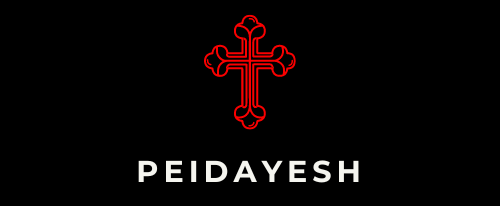
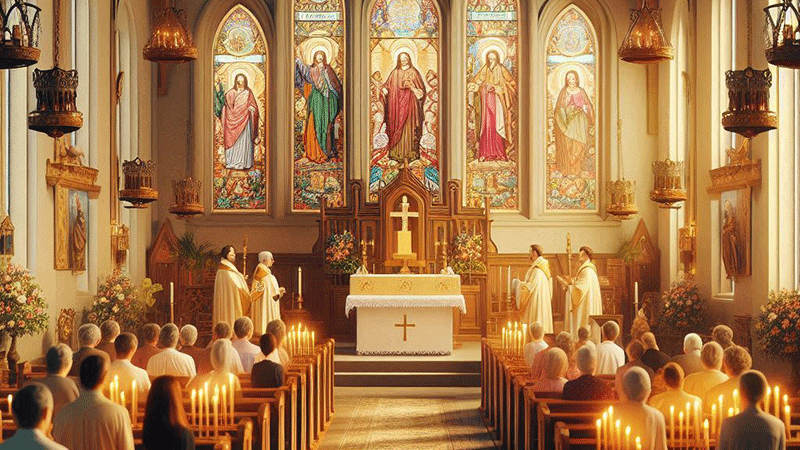





























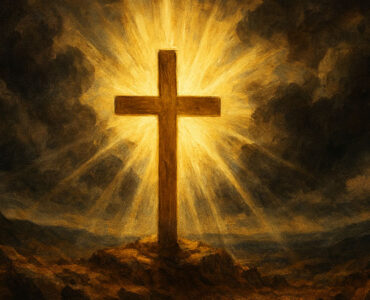
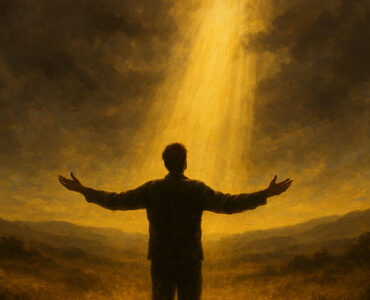
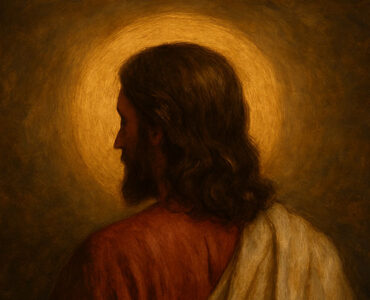




Add comment